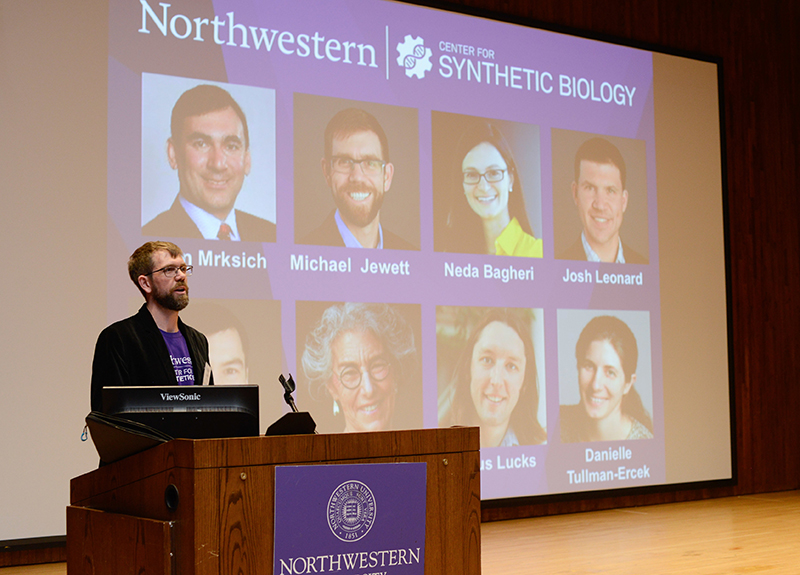EBRC retreat corresponds with the one-year anniversary of Center for Synthetic Biology
Article originally appeared in Northwestern Research News.
Although water covers 70 percent of Earth’s surface, drinkable freshwater is incredibly scarce.
Colorado State University’s June Medford believes water scarcity is one of the world’s many critical problems that can be solved with synthetic biology. She recently described her pathbreaking work, in which she is turning plants into desalination tools, at the annual Engineering Biology Research Consortium (EBRC) retreat.
“One of the greatest limits to humanity is water,” says Medford, biology professor and pioneer in plant synthetic biology. “There is plenty of water on Earth, but the vast amount is too salty.”
Northwestern hosted this year’s EBRC retreat, which took place March 24-25 in the Norris University Center. Nearly 170 faculty, researchers, and students attended from multiple universities including MIT, Harvard, Columbia University, Caltech, Cornell, Stanford, and the University of California at Berkeley.
The retreat corresponded with the one-year anniversary of Northwestern’s Center for Synthetic Biology (CSB).
“Overall, this was a fantastic event for the Center for Synthetic Biology and Northwestern,” says Michael Jewett, chemical and biological engineering and CSB codirector. “Indeed, showcasing the exciting developments happening at Northwestern was a terrific way to spend our one-year anniversary.”
Medford and Milan Mrksich, CSB director and the Henry Wade Rogers Professor of Biomedical Engineering delivered the event’s keynote talks. Jay Walsh, vice president for research, welcomed attendees to Northwestern before restating the University’s commitment to synthetic biology. An entire floor of the Louis A. Simpson and Kimberly K. Querrey Biomedical Research Center — scheduled to open in late 2018— will be dedicated to the field.
To combat water scarcity, Medford took inspiration from mangrove trees, which she calls “ultra filters.” Growing in salty coastline water, mangroves have evolved to contain a complex salt filtration system within their roots. By engineering plants to filter salt water in similar ways, Medford believes that researchers could use plants as a cheaper, more sustainable way to filter seawater, making it drinkable. (Current desalination factories cost $1 billion each, use the same energy of a city of 50,000 to 100,000 residents, and emit tons of brine waste.)
Mangroves have a waterproofing substance, called suberin, in their roots, which acts as a barrier to salt. Medford’s team engineered plants to control and produce suberin. The engineered plants secreted fresh water comparable in quality to bottled water.
Mrksich followed Medford with a talk about new technologies in synthetic biology, including SAMDI mass spectrometry. Standing for “self-assembled monolayers desorption ionization,” SAMDI can rapidly screen a diverse library of 100,000 small molecules, allowing researchers to identify novel or optimized enzyme substrates within hours.
Developed by Mrksich, SAMDI combines surface chemistry and mass spectrometry and eliminates the need for toxic and limiting labels.
“Because we’re not working with labels, we’re not only observing activities that we’re specifically looking for,” says Mrksich. “We can discover unanticipated activities.”
A non-profit organization, the EBRC aims to bring together synthetic biologists to address national and global needs. Through retreats and workshops, it showcases research, identifies challenges and opportunities, and develops programs to address new research goals. EBRC also works to promote interdisciplinary collaborations and educate the larger public about engineering biology.
“We are thrilled to host the event to help EBRC achieve its mission,” says Jewett.
Photos by Claire Barclay



